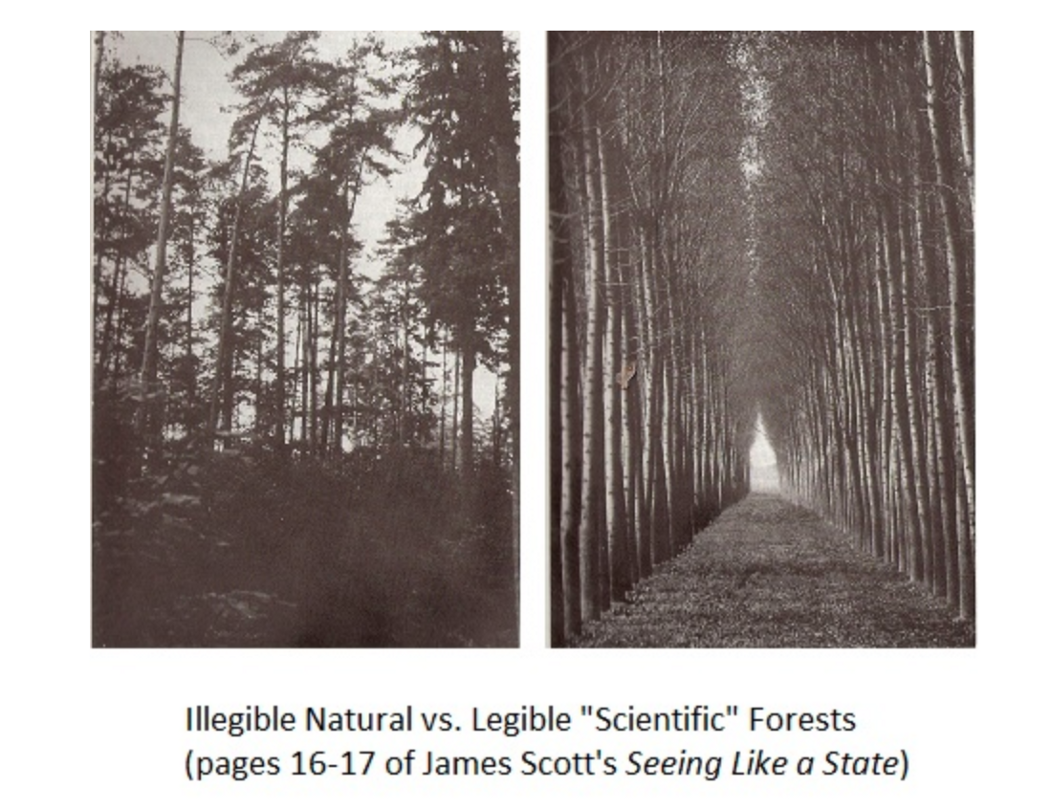Thea Snow at LSE Blog: “Sometimes, you learn about an idea that really sticks with you. This happened to me recently when I learnt about “legibility” — a concept which James C Scott introduces in his book Seeing like a State.
Just last week, I was involved in two conversations which highlighted how pervasive the logic of legibility continues to be in influencing how governments think and act. But first, what is legibility?
Defining Legibility
Legibility describes the very human tendency to simplify complex systems in order to exert control over them.
In this blog, Venkatesh Rao offers a recipe for legibility:
- Look at a complex and confusing reality…
- Fail to understand all the subtleties of how the complex reality works
- Attribute that failure to the irrationality of what you are looking at, rather than your own limitations
- Come up with an idealized blank-slate vision of what that reality ought to look like
- Argue that the relative simplicity and platonic orderliness of the vision represents rationality
- Use power to impose that vision, by demolishing the old reality if necessary.
Rao explains: “The big mistake in this pattern of failure is projecting your subjective lack of comprehension onto the object you are looking at, as “irrationality.” We make this mistake because we are tempted by a desire for legibility.”
Scott uses modern forestry practices as an example of the practice of legibility. Hundreds of years ago, forests acted as many things — they were places people harvested wood, but also places where locals went foraging and hunting, as well as an ecosystem for animals and plants. According to the logic of scientific forestry practices, forests would be much more valuable if they just produced timber. To achieve this, they had to be made legible.
So, modern agriculturalists decided to clear cut forest, and plant perfectly straight rows of a particular species of fast-growing trees. It was assumed this would be more efficient. Planting just one species meant the quality of timber would be predictable. In addition, the straight rows would make it easy to know exactly how much timber was there, and would mean timber production could be easily monitored and controlled.
Reproduced from https://www.ribbonfarm.com/2010/07/26/a-big-little-idea-called-legibility/
For the first generation of trees, the agriculturalists achieved higher yields, and there was much celebration and self-congratulation. But, after about a century, the problems of the ecosystem collapse started to reveal themselves. In imposing a logic of order and control, scientific forestry destroyed the complex, invisible, and unknowable network of relationships between plants, animals and people, which are necessary for a forest to thrive.
After a century it became apparent that relationships between plants and animals were so distorted that pests were destroying crops. The nutrient balance of the soil was disrupted. And after the first generation of trees, the forest was not thriving at all….(More)”.

